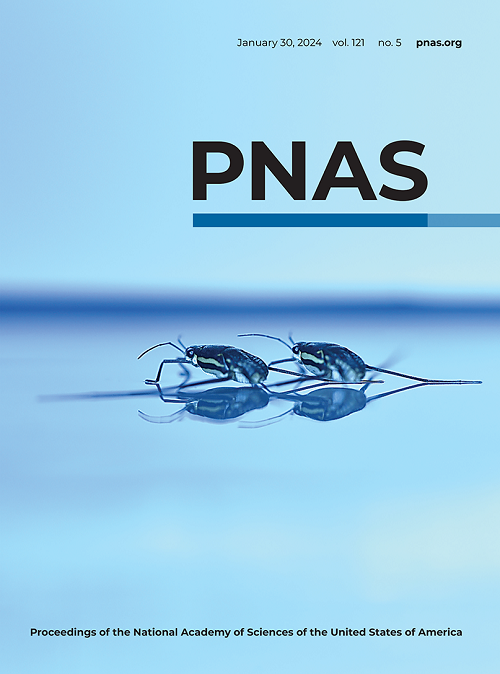Enriching surface-ordered defects on WO 3 for photocatalytic CO 2 -to-CH 4 conversion by water
IF 9.4
1区 综合性期刊
Q1 MULTIDISCIPLINARY SCIENCES
Proceedings of the National Academy of Sciences of the United States of America
Pub Date : 2024-04-25
DOI:10.1073/pnas.2319751121
引用次数: 0
Abstract
Defect engineering has been widely applied in semiconductors to improve photocatalytic properties by altering the surface structures. This study is about the transformation of inactive WO丰富 WO 3 表面有序缺陷,实现光催化水将 CO 2 转化为 CH 4
缺陷工程已被广泛应用于半导体领域,通过改变表面结构来改善光催化性能。本研究通过大量引入表面有序缺陷,将无活性的 WO 3 纳米片转化为高效的 CO 2 转化为 CH 4 光催化剂。我们使用像差校正电子显微镜对非全度 WO 3- x 样品进行了研究。结果揭示了大量的表面有序端点,这些端点来自周期性的{013}堆叠断层,缺陷密度为 20.2%。{002}表面有序线缺陷是固定 CO 2 的活性位点,将无活性的 WO 3 纳米片转化为高活性催化剂(CH 4 : O 2 = 8.2 : 16.7 μmol h -1 )。我们认为,W-O-C-W-O 物种的形成是催化途径中的关键一步。这项工作从原子水平上理解了活化小分子催化剂的结构缺陷。
本文章由计算机程序翻译,如有差异,请以英文原文为准。
求助全文
约1分钟内获得全文
求助全文
来源期刊
CiteScore
19.00
自引率
0.90%
发文量
3575
审稿时长
2.5 months
期刊介绍:
The Proceedings of the National Academy of Sciences (PNAS), a peer-reviewed journal of the National Academy of Sciences (NAS), serves as an authoritative source for high-impact, original research across the biological, physical, and social sciences. With a global scope, the journal welcomes submissions from researchers worldwide, making it an inclusive platform for advancing scientific knowledge.

 求助内容:
求助内容: 应助结果提醒方式:
应助结果提醒方式:


